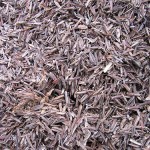May15
Innovating in Tight-Budget Times
Point: Innovation doesn’t have to be expensive
Story:
Current surveys indicate that more companies are reducing innovation budgets this year, but the good news is that innovation doesn’t have to be expensive. Here two stories that show how to innovate inexpensively:
J.B. Hunt was just a truck driver in the 1940s when he saw that rice mills in Arkansas were disposing of rice hulls by burning them. Rice hulls are the fluffy tough fibrous shells removed to create white rice. The waste hulls gave Hunt an idea: he contracted with the mills to haul away their rice hulls, and then he sold the hulls to poultry farmers as chicken-house litter. After Hunt’s revelation of the potential value of rice hulls, others found additional innovative uses for the material: pillow stuffing, high-fiber additives for pet food, natural building insulation, filler for injection-molded plastics, and using rice hulls to improve apple juice extraction.
Similarly, old rubber tires are being ground up and made into roads and shoes. And clothing & outdoor gear maker Patagonia asks customers to bring in their worn-out Capiline clothing (a polyester fabric) rather than throwing it away. Patagonia has devised a way to break down the discarded fabric into plastic chips and then respin them into new synthetic yarn. Given the increasing concerns about proper waste disposal, waste products provide attractive opportunities as no-cost or low-cost sources of innovative raw materials.
In addition to innovating with waste products, companies can leverage fallow innovations. During the early 1980s, IBM Corp was spending at least a hundred times more on R&D than Apple Inc. But upstart Apple found a way to leverage some new underutilized technologies (the computer mouse, high-resolution display monitors, the power of the 32-bit microprocessor and the graphical user interface) to create the Lisa and then the Macintosh. What existing technologies could you put to use in new ways?
Action
- Survey existing supplies of materials and streams of byproducts
- Look for materials that are underutilized or are discarded
- Consider how those materials might be recombined, repurposed, or refurbished for other, valuable applications
For More Information:
Patagonia’s Common Threads Garment Recycling Program
Innovation to the Core by Peter Skarzynski and Rowan Gibson
Follow along on all other 24 Hours of Innovation events at http://www.boardofinnovation.com/events/the-24-hours-of-innovation/
4 Comments »Case study, How-to, Innovation, Opportunity, Strategy
4 Responses to “Innovating in Tight-Budget Times”










Philippe May 15th 2009 at 08:47 pm 1
Hi Andrea, I really like your to-the-point style of writing. And a very true point as well! thanks for sharing your pep talk
Mike Brown May 16th 2009 at 12:43 am 2
Andrea – Thanks for sharing these examples. The idea that “innovation” and “creativity” are synonymous with “cost,” “expensive,” and “time consuming” is a dangerous one, yet one appearing to become more prevalent.
Thanks,
Mike
What happened during the 24 Hours of Innovation 2009 | The Board Of Innovation May 20th 2009 at 05:29 am 3
[…] innovation, Mike Brown on underground innovation, Bobbie Carlton on New products, Andrea Meyer on inexpensive innovation, James King on new media, Francois Gossieaux on Social media, Kathie Thomas on The Future of […]
Bernie Gracy May 20th 2009 at 10:02 am 4
Hi Andrea – your post was timely. On a story on NPR’s Morning Edition they highlighted a company called GreenSoul shoes which makes sandals out of recycled tires. They hope to sell 1 million pair by 2014. (http://www.npr.org/templates/story/story.php?storyId=104334308).
With regards to your 3rd point I am reminded of the application of the Triz methodology in innovation – where that innovation is fueled by leveraging the inherent properties of materials.
Bernie